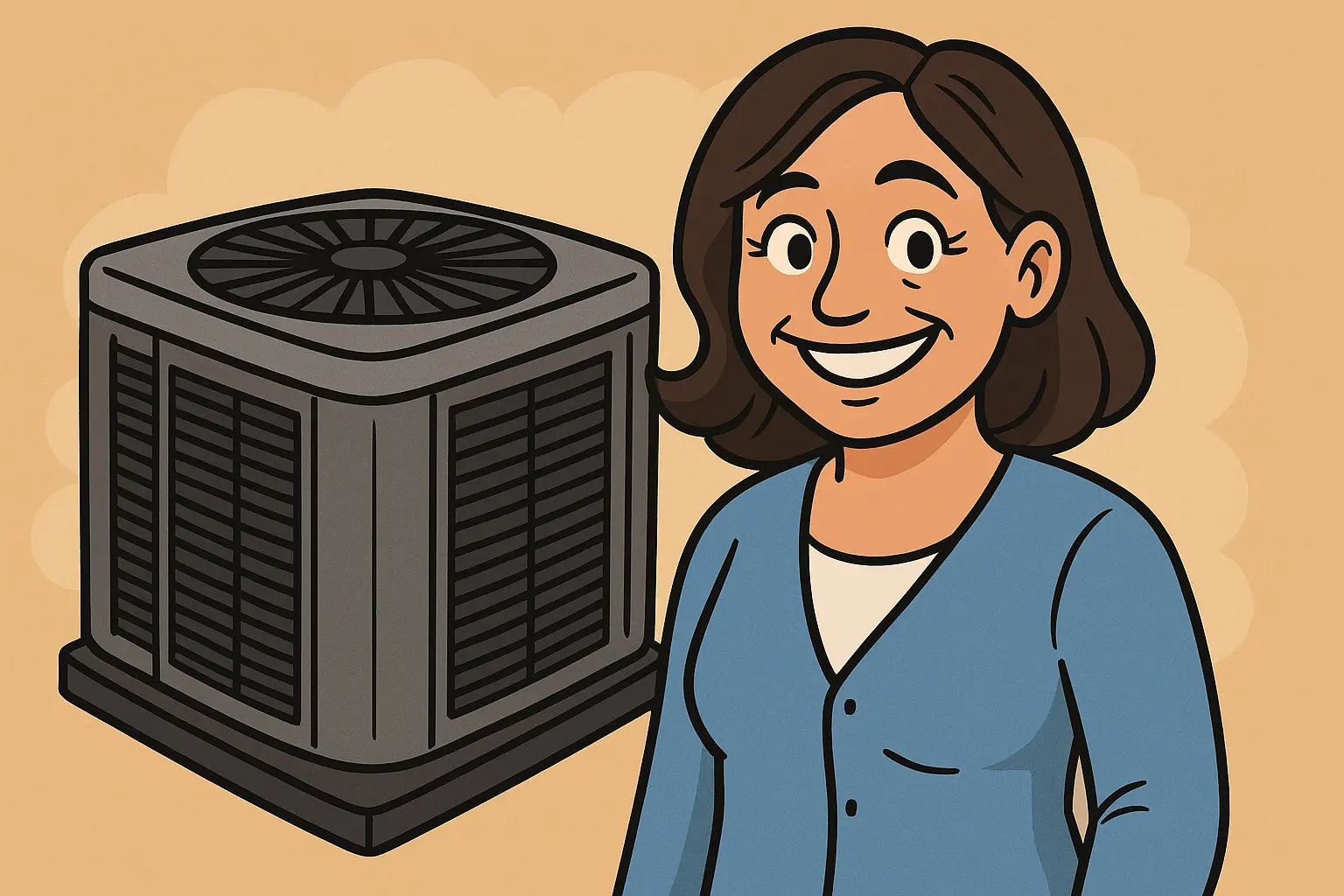Let's Get Started:
So, you’ve installed your brand-new Goodman GLXS4BA3610 R-32 condenser and AMST36CU1300 air handler. It powers on. The refrigerant lines are tight. The thermostat clicks in. But something’s off—airflow feels weak. Not enough push. You’re not alone. The likely issue? Improper DIP switch configuration on the air handler.
Let’s fix that.
What Are DIP Switches, Anyway?
DIP (Dual In-line Package) switches are small toggle switches on the air handler control board that let you configure how the blower operates. Think of them as old-school coding for HVAC brains.
They control things like:
-
Blower speed
-
Airflow rate
-
Cooling or heating delays
-
Dehumidification settings
-
Tonnage compatibility
If these aren’t set correctly during install, your system may underperform—even if everything else looks perfect.
💡 Pro Tip: Before changing DIP settings, always shut off power to the system. No exceptions.
Step-by-Step: Accessing the DIP Switches on the AMST36CU1300
-
Cut Power at the Disconnect. Safety first.
-
Remove the Control Panel Cover of the air handler.
-
Locate the DIP Switch Bank. It’ll usually be on the integrated control board near the blower motor.
-
Use the Installer’s Manual. There should be a legend printed on the inside of the air handler or provided in the manual.
Refer to the official Goodman AMST Series Installation Manual (PDF) for exact switch definitions. This is a must-read.
Matching Airflow to System Tonnage
For the 3-ton (36,000 BTU) system, you want to configure the DIP switches so that airflow matches the rated CFM (Cubic Feet per Minute).
-
A typical 3-ton AC system should push 1,100–1,200 CFM.
-
DIP switches determine blower tap settings to match this.
-
Factory settings may default to lower airflow values—you’ll need to adjust.
💨 Too little airflow? You’ll get poor cooling, frozen coils, and high humidity.
🔥 Too much airflow? You’ll hear noise, lose efficiency, and risk short cycling.
Use the blower performance chart in the install manual to cross-reference static pressure with blower RPM and CFM. You can also check out this excellent blower setup guide from Energy Vanguard for airflow fundamentals.
Don't Forget Dehumidification Mode
If you’re in a humid climate, Goodman allows DIP switches to trigger a dehumidification mode that slows airflow to remove more moisture during cooling. This is a game-changer for comfort.
Just be cautious—it shouldn't be activated if you're in a dry climate. Moisture removal will slow cooling unnecessarily.
🛠️ Check this HVAC School breakdown of dehumidification and airflow to understand how fan speed and coil temp interact.
Confirming the Settings
Once you’ve configured the DIP switches:
-
Double-check all positions. DIP switches are small and easy to misread.
-
Replace the cover.
-
Power the unit back on.
-
Test airflow at multiple registers using an anemometer or simple tissue test.
If you want to calculate your target airflow per room, this HVAC Load Calculator can help you estimate ideal airflow based on square footage.
Common DIP Switch Mistakes
-
Leaving factory settings unchanged.
-
Misreading switch orientation. (Some boards read left-to-right, others right-to-left.)
-
Ignoring static pressure. You can’t just “eyeball” airflow.
-
Failing to match blower to the coil tonnage.
-
Setting dehumidification mode when not needed.
Still unsure? Goodman offers detailed blower setup instructions in their service manuals. You can also consult HVAC.com's guide to blower motor troubleshooting.
Final Thoughts
If your Goodman GLXS4BA3610 and AMST36CU1300 system isn’t blowing like it should, don't immediately assume it's a faulty install. Misconfigured DIP switches are one of the most common and easily fixable culprits.
Want to avoid airflow issues from day one? Make sure you’ve got the right system—and the right support. Explore the full specs and trusted components in the Goodman 3 Ton 14.5 SEER2 R-32 System.
Having electrical issues? Visit: Diagnosing Electrical Issues on the GLXS4BA3610 Outdoor Unit.
Don’t let a tiny switch stand between you and cool, comfortable air.
Until next time,
- Samantha, Home Comfort Advisor







